MakerSpace: Secret Sauce is in the Standards
Resource Materials:
In this section of the Resources Page you will find reference materials, tutorials and how-to information that will help you review or extend your knowledge from the presentation.
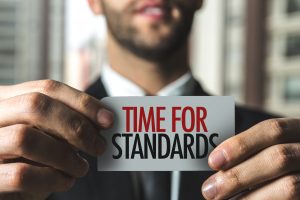
10 MakerSpace + Standards
- MakerSpace Activity ONE – How can you work with a partner to create a review game using only the cardboard MakerSpacestation and additional paper supplies found in our MakerSpace?
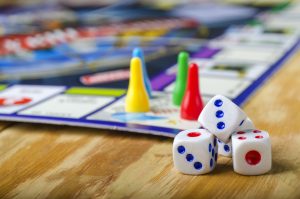 Standards included:
Standards included:
21st Century Skills –
Critical Thinking & Problem Solving
Collaboration
Creativity & Imagination
ISTE Standards for Students –
Knowledge Constructor – Students critically curate a variety of resources using digital tools to construct knowledge, produce creative artifacts and make meaningful learning experiences for themselves and others.
3a Students plan and employ effective research strategies to locate information and other resources for their intellectual or creative pursuits.
3c Students curate information from digital resources using a variety of tools and methods to create collections of artifacts that demonstrate meaningful connections or conclusions.
Global Collaborator – Students use digital tools to broaden their perspectives and enrich their learning by collaborating with others and working effectively in teams locally and globally.
7b Students use collaborative technologies to work with others, including peers, experts or community members, to examine issues and problems from multiple viewpoints.
7c Students contribute constructively to project teams, assuming various roles and responsibilities to work effectively toward a common goal.
Next Generation Science Standards
3-5 Engineering Design
3-5-ETS1-1. Define a simple design problem reflecting a need or a want that includes specified criteria for success and constraints on materials, time, or cost.
Common Core Language Arts
SL.3.4 Report on a topic or text, tell a story, or recount an experience with appropriate facts and relevant, descriptive details, speaking clearly at an understandable pace. (3-LS3-1),(3-LS3-2),(3-LS4-2)
W.2.7 Participate in shared research and writing projects (K-PS3-1),(K-PS3-2),(K-ESS2-1)
W.3.7 Conduct short research projects that build knowledge about a topic. (3-ESS3-1)
MakerSpace Activity TWO – How can you (and your group) recreate a famous landmark that you have researched, using only Lego’s from our MakerSpace? 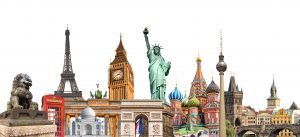 Standards Included:
Standards Included:
21st Century Skills –
Critical Thinking & Problem Solving
Collaboration
Creativity & imaginations
ISTE Standards for Students –
Knowledge Constructor – Students critically curate a variety of resources using digital tools to construct knowledge, produce creative artifacts and make meaningful learning experiences for themselves and others.
3a Students plan and employ effective research strategies to locate information and other resources for their intellectual or creative pursuits.
3b Students evaluate the accuracy, perspective, credibility and relevance of information, media, data or other resources.
3c Students curate information from digital resources using a variety of tools and methods to create collections of artifacts that demonstrate meaningful connections or conclusions.
Innovative Designer – Students use a variety of technologies within a design process to identify and solve problems by creating new, useful or imaginative solutions.
4c Students develop, test and refine prototypes as part of a cyclical design process.
4d Students exhibit a tolerance for ambiguity, perseverance and the capacity to work with open-ended problems.
Global Collaborator – Students use digital tools to broaden their perspectives and enrich their learning by collaborating with others and working effectively in teams locally and globally.
7c Students contribute constructively to project teams, assuming various roles and responsibilities to work effectively toward a common goal.
Next Generation Science Standards –
MS-ETS1-1. Define the criteria and constraints of a design problem with sufficient precision to ensure a successful solution, taking into account relevant scientific principles and potential impacts on people and the natural environment that may limit possible solutions.
MS-ETS1-2. Evaluate competing design solutions using a systematic process to determine how well they meet the criteria and constraints of the problem.
MS-ETS1-3. Analyze data from tests to determine similarities and differences among several design solutions to identify the best characteristics of each that can be combined into a new solution to better meet the criteria for success.
MS-ETS1-4. Develop a model to generate data for iterative testing and modification of a proposed object, tool, or process such that an optimal design can be achieved.
Common Core Language Arts –
SL.8.5 Integrate multimedia and visual displays into presentations to clarify information, strengthen claims and evidence, and add interest. (MS-PS3-2)
W.3.7 Conduct short research projects that build knowledge about a topic. (3-ESS3-1)
Common Core Math –
4 Model with mathematics. (K-ESS2-1),(K-ESS3-2)
4.MD.A.2 Use the four operations to solve word problems involving distances, intervals of time, liquid volumes, masses of objects, and money, including problems involving simple fractions or decimals, and problems that require expressing measurements given in a larger unit in terms of a smaller unit. Represent measurement quantities using diagrams such as number line diagrams that feature a measurement scale.
MakerSpace Activity THREE – How can you and a partner use the dough to demonstrate your understanding of electricity? Make a video to share your project. 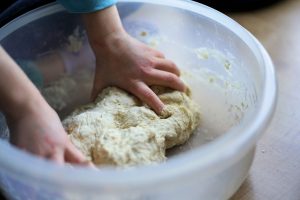
Standards Included:
21st Century Skills –
Communication
Critical Thinking & Problem Solving
Collaboration
Creativity & imaginations
ISTE Standards for Students –
Knowledge Constructor – Students critically curate a variety of resources using digital tools to construct knowledge, produce creative artifacts and make meaningful learning experiences for themselves and others.
3d Students build knowledge by actively exploring real-world issues and problems, developing ideas and theories and pursuing answers and solutions.
Innovative Designer – Students use a variety of technologies within a design process to identify and solve problems by creating new, useful or imaginative solutions.
4a Students know and use a deliberate design process for generating ideas, testing theories, creating innovative artifacts or solving authentic problems.
4d Students exhibit a tolerance for ambiguity, perseverance and the capacity to work with open-ended problems.
Computational Thinker – Students develop and employ strategies for understanding and solving problems in ways that leverage the power of technological methods to develop and test solutions.
5c Students break problems into component parts, extract key information, and develop descriptive models to understand complex systems or facilitate problem-solving.
Creative Communicator – Students communicate clearly and express themselves creatively for a variety of purposes using the platforms, tools, styles, formats and digital media appropriate to their goals.
6a Students choose the appropriate platforms and tools for meeting the desired objectives of their creation or communication.
6c Students communicate complex ideas clearly and effectively by creating or using a variety of digital objects such as visualizations, models or simulations.
6d Students publish or present content that customizes the message and medium for their intended audiences.
Global Collaborator – Students use digital tools to broaden their perspectives and enrich their learning by collaborating with others and working effectively in teams locally and globally.
7b Students use collaborative technologies to work with others, including peers, experts or community members, to examine issues and problems from multiple viewpoints.
7c Students contribute constructively to project teams, assuming various roles and responsibilities to work effectively toward a common goal.
Next Generation Science Standards –
- Energy
4-PS3-2. Make observations to provide evidence that energy can be transferred from place to place by sound, light, heat, and electric currents.
4-PS3-4. Apply scientific ideas to design, test, and refine a device that converts energy from one form to another.
3-5 Engineering Design
3-5-ETS1-1. Define a simple design problem reflecting a need or a want that includes specified criteria for success and constraints on materials, time, or cost.
3-5-ETS1-2. Generate and compare multiple possible solutions to a problem based on how well each is likely to meet the criteria and constraints of the problem.
3-5-ETS1-3. Plan and carry out fair tests in which variables are controlled and failure points are considered to identify aspects of a model or prototype that can be improved.
MS Forces and Interactions (6-8)
MS-PS2-3. Ask questions about data to determine the factors that affect the strength of electric and magnetic forces.
MS Energy
MS-PS3-4. Plan an investigation to determine the relationships among the energy transferred, the type of matter, the mass, and the change in the average kinetic energy of the particles as measured by the temperature of the sample.
Common Core Language Arts –
RI.2.3 Describe the connection between a series of historical events, scientific ideas or concepts, or steps in technical procedures in a text. (2-PS1-4)
RI.3.3 Describe the relationship between a series of historical events, scientific ideas or concepts, or steps in technical procedures in a text, using language that pertains to time, sequence, and cause/effect. (3-LS2-1),(3-LS4-1),(3-LS4-3),(3-LS4-4)
RST.6-8.3 Follow precisely a multistep procedure when carrying out experiments, taking measurements, or performing technical tasks. (MS-PS1-6)
SL.3.4 Report on a topic or text, tell a story, or recount an experience with appropriate facts and relevant, descriptive details, speaking clearly at an understandable pace. (3-LS3-1),(3-LS3-2),(3-LS4-2)
SL.3.5 Create engaging audio recordings of stories or poems that demonstrate fluid reading at an understandable pace; add visual displays when appropriate to emphasize or enhance certain facts or details. (3-LS1-1)
SL.4.5 Add audio recordings and visual displays to presentations when appropriate to enhance the development of main ideas or themes. (4-PS4-1)
SL.5.5 Include multimedia components (e.g., graphics, sound) and visual displays in presentations when appropriate to enhance the development of main ideas or themes. (5-PS3-1),(5-LS2-1)
SL.8.5 Integrate multimedia and visual displays into presentations to clarify information, strengthen claims and evidence, and add interest. (MS-PS3-2)
SL.8.4 Present claims and findings, emphasizing salient points in a focused, coherent manner with relevant evidence, sound valid reasoning, and well-chosen details; use appropriate eye contact, adequate volume, and clear pronunciation. (MS-LS4-2),(MS-LS4-4)
W.2.7 Participate in shared research and writing projects (2-PS1-1),(2-PS1-2),(2-PS1-3)
W.4.2 Write informative/explanatory texts to examine a topic and convey ideas and information clearly. (4-PS3-1)
WHST.9-12.7 Conduct short as well as more sustained research projects to answer a question (including a self-generated question) or solve a problem; narrow or broaden the inquiry when appropriate; synthesize multiple sources on the subject, demonstrating understanding of the subject under investigation. (HS- PS1-3)
MakerSpace Activity FOUR – How can you and a partner use Lego’s/blocks to create a new playground design to include the area and perimeter? 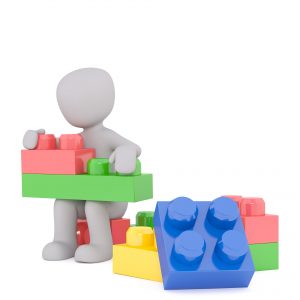
Standards Included:
21st Century Skills –
Critical Thinking & Problem Solving
Collaboration
Creativity & imaginations
ISTE Standards for Students –
Knowledge Constructor – Students critically curate a variety of resources using digital tools to construct knowledge, produce creative artifacts and make meaningful learning experiences for themselves and others.
3a Students plan and employ effective research strategies to locate information and other resources for their intellectual or creative pursuits.
3d Students build knowledge by actively exploring real-world issues and problems, developing ideas and theories and pursuing answers and solutions.
Innovative Designer – Students use a variety of technologies within a design process to identify and solve problems by creating new, useful or imaginative solutions.
4a Students know and use a deliberate design process for generating ideas, testing theories, creating innovative artifacts or solving authentic problems.
4c Students develop, test and refine prototypes as part of a cyclical design process.
4d Students exhibit a tolerance for ambiguity, perseverance and the capacity to work with open-ended problems.
Computational Thinker – Students develop and employ strategies for understanding and solving problems in ways that leverage the power of technological methods to develop and test solutions.
5c Students break problems into component parts, extract key information, and develop descriptive models to understand complex systems or facilitate problem-solving.
Creative Communicator – Students communicate clearly and express themselves creatively for a variety of purposes using the platforms, tools, styles, formats and digital media appropriate to their goals.
6b Students create original works or responsibly repurpose or remix digital resources into new creations.
6c Students communicate complex ideas clearly and effectively by creating or using a variety of digital objects such as visualizations, models or simulations.
6d Students publish or present content that customizes the message and medium for their intended audiences.
Global Collaborator – Students use digital tools to broaden their perspectives and enrich their learning by collaborating with others and working effectively in teams locally and globally.
7c Students contribute constructively to project teams, assuming various roles and responsibilities to work effectively toward a common goal.
Next Generation Science Standards –
3-5 Engineering Design
3-5-ETS1-1. Define a simple design problem reflecting a need or a want that includes specified criteria for success and constraints on materials, time, or cost.
3-5-ETS1-2. Generate and compare multiple possible solutions to a problem based on how well each is likely to meet the criteria and constraints of the problem.
3-5-ETS1-3. Plan and carry out fair tests in which variables are controlled and failure points are considered to identify aspects of a model or prototype that can be improved.
MS Engineering Design
MS-ETS1-2. Evaluate competing design solutions using a systematic process to determine how well they meet the criteria and constraints of the problem.
MS-ETS1-4. Develop a model to generate data for iterative testing and modification of a proposed object, tool, or process such that an optimal design can be achieved.
Common Core Math –
4 Model with mathematics. (K-ESS2-1),(K-ESS3-2)
2.MD.A.3 Estimate lengths using units of inches, feet, centimeters, and meters.
3.MD.D.8 Solve real-world and mathematical problems involving perimeters of polygons, including finding the perimeter given the side lengths, finding an unknown side length, and exhibiting rectangles with the same perimeter and different areas or with the same area and different perimeters.
4.MD.A.1 Know relative sizes of measurement units within one system of units including km, m, cm; kg, g; lb, oz.; l, ml; hr, min, sec. Within a single system of measurement, express measurements in a larger unit in terms of a smaller unit. Record measurement equivalents in a two-column table. (4-ESS1-1),(4-ESS2-1)
4.MD.A.2 Use the four operations to solve word problems involving distances, intervals of time, liquid volumes, masses of objects, and money, including problems involving simple fractions or decimals, and problems that require expressing measurements given in a larger unit in terms of a smaller unit. Represent measurement quantities using diagrams such as number line diagrams that feature a measurement scale.
4.MD.A.3 Apply the area and perimeter formulas for rectangles in real-world and mathematical problems.
7.EE.B.4 Use variables to represent quantities in a real-world or mathematical problem and construct simple equations and inequalities to solve problems by reasoning about the quantities. (MS-PS2-1),(MS-PS2-2)
HSN-Q.A.1 Use units as a way to understand problems and to guide the solution of multi-step problems; choose and interpret units consistently in formulas; choose and interpret the scale and the origin in graphs and data displays. (HS-PS1-2),(HS-PS1-4),(HS-PS1-5),(HS-PS1-7)
HSN-Q.A.2 Define appropriate quantities for the purpose of descriptive modeling. (HS-PS1-4),(HS-PS1-7)
MakerSpace Activity FIVE – How can you create a game using one of the provided coding programs? 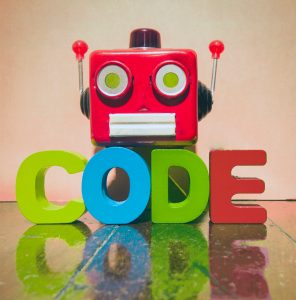
Standards Included:
21st Century Skills –
Critical Thinking & Problem Solving
Collaboration
Creativity & imaginations
ISTE Standards for Students –
Empowered Learner – Students leverage technology to take an active role in choosing, achieving and demonstrating competency in their learning goals, informed by the learning sciences.
1d Students understand the fundamental concepts of technology operations, demonstrate the ability to choose, use and troubleshoot current technologies and are able to transfer their knowledge to explore emerging technologies.
Innovative Designer – Students use a variety of technologies within a design process to identify and solve problems by creating new, useful or imaginative solutions.
4b Students select and use digital tools to plan and manage a design process that considers design constraints and calculated risks.
4c Students develop, test and refine prototypes as part of a cyclical design process.
4d Students exhibit a tolerance for ambiguity, perseverance and the capacity to work with open-ended problems.
Computational Thinker – Students develop and employ strategies for understanding and solving problems in ways that leverage the power of technological methods to develop and test solutions.
5a Students formulate problem definitions suited for technology-assisted methods such as data analysis, abstract models and algorithmic thinking in exploring and finding solutions.
Creative Communicator – Students communicate clearly and express themselves creatively for a variety of purposes using the platforms, tools, styles, formats and digital media appropriate to their goals.
6a Students choose the appropriate platforms and tools for meeting the desired objectives of their creation or communication.
6b Students create original works or responsibly repurpose or remix digital resources into new creations.
6d Students publish or present content that customizes the message and medium for their intended audiences.
Next Generation Science Standards –
K-2.Engineering Design
K-2-ETS1-2. Develop a simple sketch, drawing, or physical model to illustrate how the shape of an object helps it function as needed to solve a given problem.
MS Engineering Design
MS-ETS1-4. Develop a model to generate data for iterative testing and modification of a proposed object, tool, or process such that an optimal design can be achieved.
Common Core Language Arts –
RI.4.7 Interpret information presented visually, orally, or quantitatively (e.g., in charts, graphs, diagrams, time lines, animations, or interactive elements on Web pages) and explain how the information contributes to an understanding of the text in which it appears. (4-ESS2-2)
RST.6-8.3 Follow precisely a multistep procedure when carrying out experiments, taking measurements, or performing technical tasks. (MS-PS1-6)
MakerSpace Activity SIX – How can you use the beads to create a unique pattern to share with the class? 
Standards Included:
21st Century Skills –
Critical Thinking & Problem Solving
Creativity & imaginations
ISTE Standards for Students –
Innovative Designer – Students use a variety of technologies within a design process to identify and solve problems by creating new, useful or imaginative solutions.
4a Students know and use a deliberate design process for generating ideas, testing theories, creating innovative artifacts or solving authentic problems.
4d Students exhibit a tolerance for ambiguity, perseverance and the capacity to work with open-ended problems.
Common Core Math –
4 Model with mathematics. (K-ESS2-1),(K-ESS3-2)
K.CC Counting and Cardinality (K-ESS3-2)
K.CC.A Know number names and the count sequence. (K-ESS2-1)
K.MD.B.3 Classify objects into given categories; count the number of objects in each category and sort the categories by count. (K-ESS2-1)
4.OA.C.5 Generate a number or shape pattern that follows a given rule. Identify apparent features of the pattern that were not explicit in the rule itself.
MakerSpace Activity SEVEN – How can your team use the Green Screen (and props) to create an argumentative skit presenting if you would support or oppose being part of Washington’s army during the Revolutionary War? Be sure to provide at least 5 reasons based on class readings. 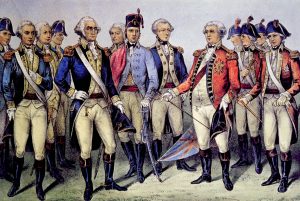
Standards Included:
21st Century Skills –
Communication
Critical Thinking & Problem Solving
Collaboration
Creativity & imaginations
ISTE Standards for Students –
Empowered Learner – Students leverage technology to take an active role in choosing, achieving and demonstrating competency in their learning goals, informed by the learning sciences.
1c Students use technology to seek feedback that informs and improves their practice and to demonstrate their learning in a variety of ways.
1d Students understand the fundamental concepts of technology operations, demonstrate the ability to choose, use and troubleshoot current technologies and are able to transfer their knowledge to explore emerging technologies.
Knowledge Constructor – Students critically curate a variety of resources using digital tools to construct knowledge, produce creative artifacts and make meaningful learning experiences for themselves and others.
3a Students plan and employ effective research strategies to locate information and other resources for their intellectual or creative pursuits.
3b Students evaluate the accuracy, perspective, credibility and relevance of information, media, data or other resources.
3c Students curate information from digital resources using a variety of tools and methods to create collections of artifacts that demonstrate meaningful connections or conclusions.
Innovative Designer – Students use a variety of technologies within a design process to identify and solve problems by creating new, useful or imaginative solutions.
4b Students select and use digital tools to plan and manage a design process that considers design constraints and calculated risks.
4d Students exhibit a tolerance for ambiguity, perseverance and the capacity to work with open-ended problems.
Creative Communicator – Students communicate clearly and express themselves creatively for a variety of purposes using the platforms, tools, styles, formats and digital media appropriate to their goals.
6b Students create original works or responsibly repurpose or remix digital resources into new creations.
6c Students communicate complex ideas clearly and effectively by creating or using a variety of digital objects such as visualizations, models or simulations.
6d Students publish or present content that customizes the message and medium for their intended audiences.
Global Collaborator – Students use digital tools to broaden their perspectives and enrich their learning by collaborating with others and working effectively in teams locally and globally.
7c Students contribute constructively to project teams, assuming various roles and responsibilities to work effectively toward a common goal.
Common Core Language Arts –
RI.2.1 Ask and answer such questions as who, what, where, when, why, and how to demonstrate understanding of key details in a text. (2-PS1-4)
RI.2.3 Describe the connection between a series of historical events, scientific ideas or concepts, or steps in technical procedures in a text. (2-PS1-4)
RI.3.3 Describe the relationship between a series of historical events, scientific ideas or concepts, or steps in technical procedures in a text, using language that pertains to time, sequence, and cause/effect. (3-LS2-1),(3-LS4-1),(3-LS4-3),(3-LS4-4)
RI.4.3 Explain events, procedures, ideas, or concepts in a historical, scientific, or technical text, including what happened and why, based on specific information in the text. (4-PS3-1)
SL.2.5 Create audio recordings of stories or poems; add drawings or other visual displays to stories or recounts of experiences when appropriate to clarify ideas, thoughts, and feelings. (2-LS2-2)
SL.3.4 Report on a topic or text, tell a story, or recount an experience with appropriate facts and relevant, descriptive details, speaking clearly at an understandable pace. (3-LS3-1),(3-LS3-2),(3-LS4-2)
SL.3.5 Create engaging audio recordings of stories or poems that demonstrate fluid reading at an understandable pace; add visual displays when appropriate to emphasize or enhance certain facts or details. (3-LS1-1)
SL.4.5 Add audio recordings and visual displays to presentations when appropriate to enhance the development of main ideas or themes. (4-PS4-1)
SL.5.5 Include multimedia components (e.g., graphics, sound) and visual displays in presentations when appropriate to enhance the development of main ideas or themes. (5-PS3-1),(5-LS2-1)
SL.8.5 Integrate multimedia and visual displays into presentations to clarify information, strengthen claims and evidence, and add interest. (MS-PS3-2)
W.2.7 Participate in shared research and writing projects (2-PS1-1),(2-PS1-2),(2-PS1-3)
MakerSpace Activity EIGHT – How can you use the cardboard station to create your own original invention? 
Standards Included:
21st Century Skills –
Critical Thinking & Problem Solving
Creativity & imaginations
ISTE Standards for Students –
Empowered Learner – Students leverage technology to take an active role in choosing, achieving and demonstrating competency in their learning goals, informed by the learning sciences.
1a Students articulate and set personal learning goals, develop strategies leveraging technology to achieve them and reflect on the learning process itself to improve learning outcomes.
1b Students build networks and customize their learning environments in ways that support the learning process.
Knowledge Constructor – Students critically curate a variety of resources using digital tools to construct knowledge, produce creative artifacts and make meaningful learning experiences for themselves and others.
3d Students build knowledge by actively exploring real-world issues and problems, developing ideas and theories and pursuing answers and solutions.
Innovative Designer – Students use a variety of technologies within a design process to identify and solve problems by creating new, useful or imaginative solutions.
4a Students know and use a deliberate design process for generating ideas, testing theories, creating innovative artifacts or solving authentic problems.
4b Students select and use digital tools to plan and manage a design process that considers design constraints and calculated risks.
4c Students develop, test and refine prototypes as part of a cyclical design process.
4d Students exhibit a tolerance for ambiguity, perseverance and the capacity to work with open-ended problems.
Creative Communicator – Students communicate clearly and express themselves creatively for a variety of purposes using the platforms, tools, styles, formats and digital media appropriate to their goals.
6a Students choose the appropriate platforms and tools for meeting the desired objectives of their creation or communication.
6b Students create original works or responsibly repurpose or remix digital resources into new creations.
Next Generation Science Standards –
3-5 Engineering Design
3-5-ETS1-1. Define a simple design problem reflecting a need or a want that includes specified criteria for success and constraints on materials, time, or cost.
3-5-ETS1-2. Generate and compare multiple possible solutions to a problem based on how well each is likely to meet the criteria and constraints of the problem.
3-5-ETS1-3. Plan and carry out fair tests in which variables are controlled and failure points are considered to identify aspects of a model or prototype that can be improved.
MS Engineering Design
MS-ETS1-1. Define the criteria and constraints of a design problem with sufficient precision to ensure a successful solution, taking into account relevant scientific principles and potential impacts on people and the natural environment that may limit possible solutions.
MS-ETS1-2. Evaluate competing design solutions using a systematic process to determine how well they meet the criteria and constraints of the problem.
MS-ETS1-3. Analyze data from tests to determine similarities and differences among several design solutions to identify the best characteristics of each that can be combined into a new solution to better meet the criteria for success.
MS-ETS1-4. Develop a model to generate data for iterative testing and modification of a proposed object, tool, or process such that an optimal design can be achieved.
Common Core Language Arts –
RST.6-8.3 Follow precisely a multistep procedure when carrying out experiments, taking measurements, or performing technical tasks. (MS-PS1-6)
MakerSpace Activity NINE – How can you use the Green Screen and props in our MakerSpace to create a book trailer or character analysis? 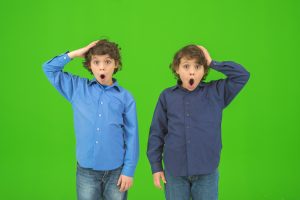
Standards Included:
21st Century Skills –
Communication
Creativity & imaginations
ISTE Standards for Students –
Empowered Learner – Students leverage technology to take an active role in choosing, achieving and demonstrating competency in their learning goals, informed by the learning sciences.
1c Students use technology to seek feedback that informs and improves their practice and to demonstrate their learning in a variety of ways.
1d Students understand the fundamental concepts of technology operations, demonstrate the ability to choose, use and troubleshoot current technologies and are able to transfer their knowledge to explore emerging technologies.
Innovative Designer – Students use a variety of technologies within a design process to identify and solve problems by creating new, useful or imaginative solutions.
4b Students select and use digital tools to plan and manage a design process that considers design constraints and calculated risks.
4d Students exhibit a tolerance for ambiguity, perseverance and the capacity to work with open-ended problems.
Creative Communicator – Students communicate clearly and express themselves creatively for a variety of purposes using the platforms, tools, styles, formats and digital media appropriate to their goals.
6b Students create original works or responsibly repurpose or remix digital resources into new creations.
6c Students communicate complex ideas clearly and effectively by creating or using a variety of digital objects such as visualizations, models or simulations.
6d Students publish or present content that customizes the message and medium for their intended audiences.
Common Core Language Arts –
SL.3.4 Report on a topic or text, tell a story, or recount an experience with appropriate facts and relevant, descriptive details, speaking clearly at an understandable pace. (3-LS3-1),(3-LS3-2),(3-LS4-2)
SL.3.5 Create engaging audio recordings of stories or poems that demonstrate fluid reading at an understandable pace; add visual displays when appropriate to emphasize or enhance certain facts or details. (3-LS1-1)
SL.5.5 Include multimedia components (e.g., graphics, sound) and visual displays in presentations when appropriate to enhance the development of main ideas or themes. (5-PS3-1),(5-LS2-1)
SL.8.5 Integrate multimedia and visual displays into presentations to clarify information, strengthen claims and evidence, and add interest. (MS-PS3-2)
W.2.7 Participate in shared research and writing projects (2-PS1-1),(2-PS1-2),(2-PS1-3)
MakerSpace Activity TEN – How can you use the materials in the MakerSpaceto create an original marble race, egg drop container, or balloon car? 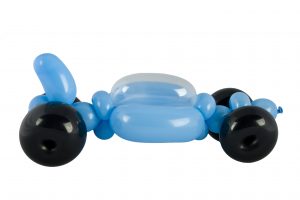
Standards Included:
21st Century Skills –
Critical Thinking & Problem Solving
Creativity & imaginations
ISTE Standards for Students –
Empowered Learner – Students leverage technology to take an active role in choosing, achieving and demonstrating competency in their learning goals, informed by the learning sciences.
1a Students articulate and set personal learning goals, develop strategies leveraging technology to achieve them and reflect on the learning process itself to improve learning outcomes.
1b Students build networks and customize their learning environments in ways that support the learning process.
Knowledge Constructor – Students critically curate a variety of resources using digital tools to construct knowledge, produce creative artifacts and make meaningful learning experiences for themselves and others.
3d Students build knowledge by actively exploring real-world issues and problems, developing ideas and theories and pursuing answers and solutions.
Innovative Designer – Students use a variety of technologies within a design process to identify and solve problems by creating new, useful or imaginative solutions.
4a Students know and use a deliberate design process for generating ideas, testing theories, creating innovative artifacts or solving authentic problems.
4b Students select and use digital tools to plan and manage a design process that considers design constraints and calculated risks.
4c Students develop, test and refine prototypes as part of a cyclical design process.
4d Students exhibit a tolerance for ambiguity, perseverance and the capacity to work with open-ended problems.
Creative Communicator – Students communicate clearly and express themselves creatively for a variety of purposes using the platforms, tools, styles, formats and digital media appropriate to their goals.
6a Students choose the appropriate platforms and tools for meeting the desired objectives of their creation or communication.
6b Students create original works or responsibly repurpose or remix digital resources into new creations.
Next Generation Science Standards –
3-5 Engineering Design
3-5-ETS1-1. Define a simple design problem reflecting a need or a want that includes specified criteria for success and constraints on materials, time, or cost.
3-5-ETS1-2. Generate and compare multiple possible solutions to a problem based on how well each is likely to meet the criteria and constraints of the problem.
3-5-ETS1-3. Plan and carry out fair tests in which variables are controlled and failure points are considered to identify aspects of a model or prototype that can be improved.
MS Engineering Design
MS-ETS1-1. Define the criteria and constraints of a design problem with sufficient precision to ensure a successful solution, taking into account relevant scientific principles and potential impacts on people and the natural environment that may limit possible solutions.
MS-ETS1-2. Evaluate competing design solutions using a systematic process to determine how well they meet the criteria and constraints of the problem.
MS-ETS1-3. Analyze data from tests to determine similarities and differences among several design solutions to identify the best characteristics of each that can be combined into a new solution to better meet the criteria for success.
MS-ETS1-4. Develop a model to generate data for iterative testing and modification of a proposed object, tool, or process such that an optimal design can be achieved.
Common Core Language Arts –
RST.6-8.3 Follow precisely a multistep procedure when carrying out experiments, taking measurements, or performing technical tasks. (MS-PS1-6)
In-the-Classroom:
Our In-the-Classroom section is where you will find ideas and examples on how to integrate the tools shared into classroom instruction.
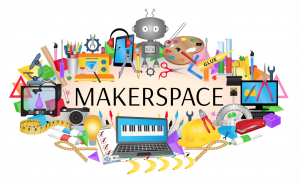
TeachersFirst MakerSpace Resources:
TeachersFirst Collection of MakerSpace Resources
TeachersFirst Collection of Coding Resources
Just Getting Started with MakerSpace?
Return to Session Home Page.